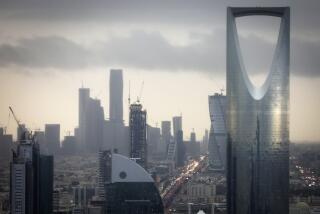Construction Boom Alters Face of Katmandu
- Share via
KATMANDU, Nepal — Land in the heart of the Nepalese capital nowadays costs more than 50 times what it cost two decades ago.
The phenomenal rise in real estate prices is the result of large-scale construction projects undertaken to accommodate the thousands of country people who are moving into the city each month in search of jobs and a better standard of living.
The character of the capital, long regarded as a living museum with its Nepalese-style houses and pagoda temples, is threatened by the building boom.
The new buildings are no different from those in other big cities, and typical Nepalese architecture--with tiled roofs, delicately carved windows and pagoda shapes--is fast disappearing in a forest of concrete boxes.
Building materials are necessarily different, too. In the past, houses were built with a lot of wood and mud-mortar, later replaced by a mortar made of lime and brick powder said to be as good as cement.
Cement and Sand Mortar
Now, cement and sand mortar are used instead. Though more expensive, they are readily available and are believed to be much stronger.
The increasing demand for building materials has led to a new problem: business cartels.
Cartels reportedly control supplies of cement, iron rods, corrugated sheet metal used for roofing, and--after the earthquake that devastated parts of eastern Nepal last August--polythene pipes.
The government has not acted against the cartels. Although the cost of these materials has not risen on the international market and the government has not levied extra taxes, materials are becoming more costly by the week.
Labor costs have also risen. Six hours of masonry work that cost about $2.50 six months ago now costs $3, and wages for unskilled labor have nearly doubled.
Many residents of the ancient city are worried about the shape Katmandu is starting to take, and the Panchayat, or local government, recently set a height limit for new buildings and banned construction in certain areas of the city, especially along river banks where parks are to be developed.
More to Read
Sign up for Essential California
The most important California stories and recommendations in your inbox every morning.
You may occasionally receive promotional content from the Los Angeles Times.













